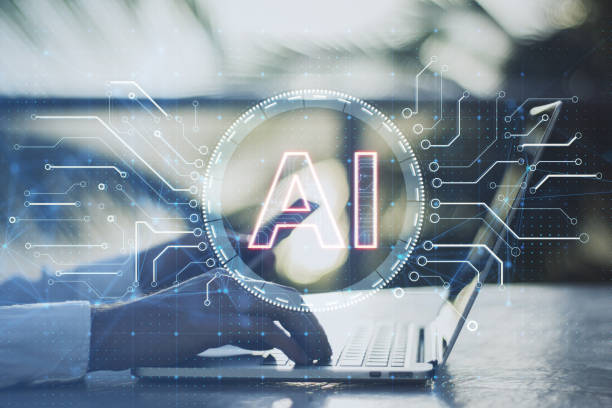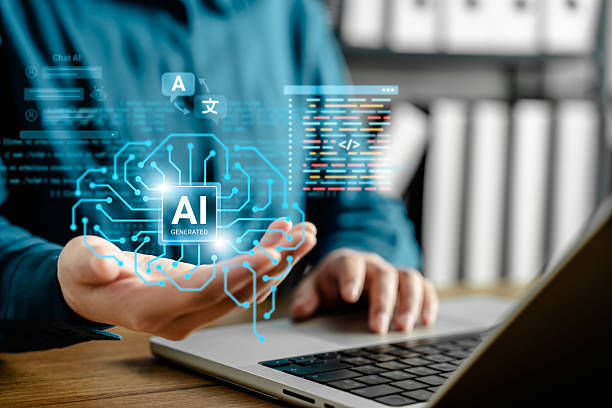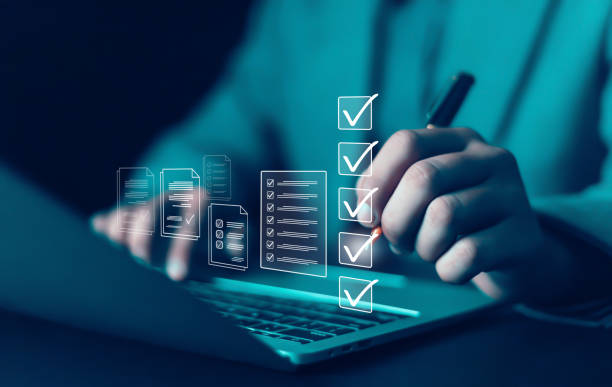What is an Artificial Intelligence Robot? Definition and Applications

#Artificial_Intelligence_Robot or AI Robot is a combination of two basic concepts: #Robotics and #Artificial_Intelligence.
In general, a robot is a mechanical or virtual device capable of performing automated tasks.
These tasks can range from simple tasks like moving along a specific path to complex operations like precise surgeries.
On the other hand, artificial intelligence refers to a branch of computer science that aims to build machines capable of performing tasks that usually require human intelligence, such as learning, reasoning, problem-solving, and natural language understanding.
The integration of these two fields leads to the creation of intelligent robots that are not only capable of performing pre-determined tasks but can also learn based on new data and experiences, make decisions, and interact with their environment.
These robots can be used in various industries, including manufacturing, healthcare, education, and even entertainment.
For example, in the manufacturing industry, AI robots can optimize production lines and improve product quality.
In the healthcare field, they can assist doctors in diagnosing diseases and performing precise surgeries.
AI robots are essentially a bridge between the physical world and the digital world and will play an important role in shaping the future.
Continuous development and improvement of these robots can lead to increased efficiency, reduced costs, and improved quality of life for humans.
Does your current company website present a worthy image of your brand and attract new customers?
If not, turn this challenge into an opportunity with Rasaweb’s professional corporate website design services.
✅ Dramatically improves your brand’s credibility and image.
✅ Paves the way for attracting leads and new customers.
⚡ Contact Rasaweb now for free and expert consultation!
Main Components of an Artificial Intelligence Robot

An artificial intelligence robot consists of several key components, each playing an important role in its overall function.
These components include:
- Sensors Sensors are devices that collect information about the surrounding environment.
This information can include visual data (through cameras), audio data (through microphones), data related to temperature, pressure, and position (through various sensors). - Processor The processor, which is usually a computer or microcontroller, is responsible for processing the data collected by the sensors.
This processing includes data analysis, pattern recognition, and decision-making based on available information.
Artificial intelligence algorithms are executed in this section and allow the robot to learn and adapt to different conditions. - Actuators Actuators are tools that allow the robot to interact with its environment.
These actuators can include motors, pumps, and other mechanical devices that enable the robot to move, manipulate objects, and perform other physical tasks. - Artificial Intelligence Software Artificial intelligence software includes algorithms and machine learning models that allow the robot to learn, make decisions, and interact with its environment.
This software can include neural networks, reinforcement learning algorithms, and other artificial intelligence techniques.
The coordinated interaction between these components enables an artificial intelligence robot to perform complex tasks effectively and intelligently.
Developing and improving each of these components can lead to increased efficiency and capabilities of the robot.
Artificial Intelligence Algorithms Used in Robots
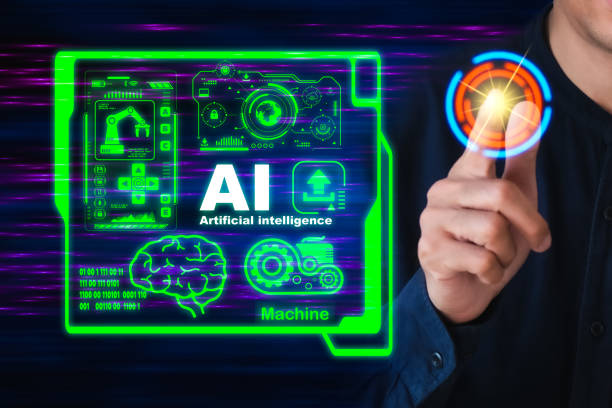
Artificial intelligence algorithms play a vital role in the performance of intelligent robots.
Some of the most important of these algorithms include:
- Machine Learning These algorithms allow robots to learn from data and improve their performance without explicit programming.
There are different types of machine learning algorithms, including Supervised Learning, Unsupervised Learning, and Reinforcement Learning. - Neural Networks Neural networks are computational models inspired by the structure of the human brain.
These networks are capable of learning complex patterns in data and are used in applications such as image recognition, natural language processing, and time series prediction. - Search Algorithms These algorithms help robots find optimal solutions in large problem spaces.
Search algorithms are commonly used in path planning, puzzle solving, and process optimization. - Expert Systems Expert systems are artificial intelligence systems that simulate the knowledge and experience of a human expert in a specific field.
These systems can be used to provide advice, diagnose problems, and make decisions in complex situations.
The choice of the appropriate algorithm depends on the type of task and the available data.
Developing and improving these algorithms can lead to increased efficiency and capabilities of artificial intelligence robots. For example, an AI robot can use these algorithms to understand its surrounding environment and make decisions about issues and solutions.
Applications of Artificial Intelligence Robots in Various Industries
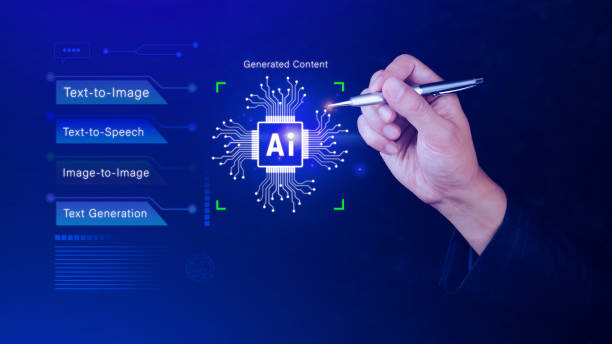
Artificial intelligence robots have extensive applications in various industries.
In the manufacturing industry, they can automate production lines, improve product quality, and reduce costs.
In the healthcare field, AI robots can assist doctors in diagnosing diseases, performing precise surgeries, and providing remote medical care.
In the logistics industry, they can optimize warehousing, transportation, and delivery processes.
In the field of education, AI robots can be used as personal teachers, teaching assistants, and interactive tools for learning.
In the entertainment industry, they can act as actors, guides, and virtual companions.
In addition, AI robots can be used in dangerous and inaccessible environments for humans, such as mines, nuclear power plants, and areas contaminated with chemicals.
In general, AI robots can play an important role in any industry that requires automation, precision, and high efficiency.
Continuous development and improvement of these robots can lead to increased productivity, reduced risks, and improved quality of life for humans.
Are you bothered by losing customers due to the outdated appearance or slow speed of your online store? The specialized Rasaweb team solves these problems with professional online store website design!
✅ Increased customer trust and brand credibility
✅ Stunning speed and excellent user experience
Get a free consultation with Rasaweb right now ⚡
Advantages and Disadvantages of Using Artificial Intelligence Robots
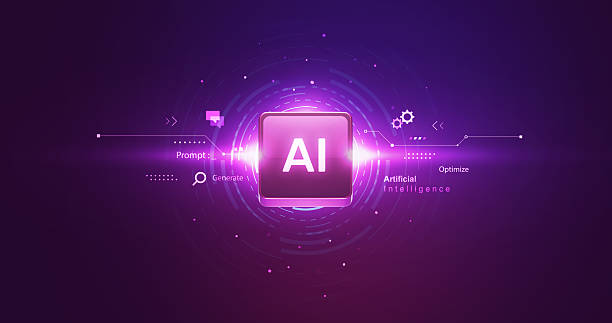
Using artificial intelligence robots has several advantages and disadvantages.
Advantages include increased efficiency and productivity, reduced costs, improved quality of products and services, reduced risks for humans, and the ability to perform complex and repetitive tasks with high accuracy.
AI robots can work continuously and without fatigue, reduce human errors, and optimize production and service processes.
However, there are also disadvantages to using AI robots.
Disadvantages include high initial costs, the need for technical expertise for design, implementation, and maintenance, potential job losses due to automation, ethical issues related to automated decision-making, and concerns about cybersecurity.
In addition, AI robots may malfunction in unexpected or complex situations and require human supervision and intervention.
In general, deciding whether to use AI robots requires careful consideration of the advantages and disadvantages, considering specific conditions, and paying attention to ethical and social issues.
An AI robot, if developed correctly, can greatly help humanity.
Future of Artificial Intelligence Robots: Prospects and Challenges
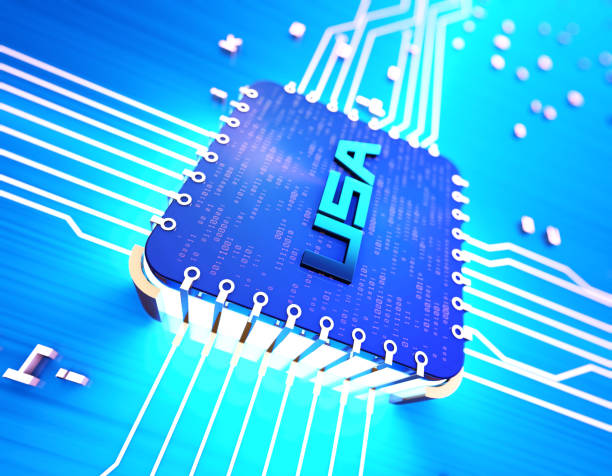
The future of AI robots is very promising, but there are also challenges that need to be addressed.
It is expected that AI robots will play a more important role in daily life and various industries in the near future.
Recent advances in the fields of machine learning, computer vision, and natural language processing have made it possible to build robots that are capable of performing more complex tasks and interacting more naturally with humans.
In the future, AI robots can be expected to be used more widely in areas such as healthcare, education, transportation, and customer service.
However, there are also challenges that need to be addressed.
These challenges include ethical issues related to automated decision-making, concerns about cybersecurity, the need to develop safety standards, and the potential job losses due to automation.
To fully exploit the potential of AI robots, these challenges need to be seriously considered and solutions to address them need to be provided.
AI robots can soon transform our lives.
How to Build an Artificial Intelligence Robot: A Step-by-Step Guide

Building an artificial intelligence robot is a complex process that requires various knowledge and skills.
Here is a step-by-step guide to building an artificial intelligence robot:
- Define the Goal Before you start, you need to define your goal in building the robot.
What task should your robot perform? What features should it have? - Hardware Selection The robot’s hardware includes sensors, processor, actuators, and power supply.
You need to choose hardware that is compatible with your goal and budget. - Software Selection The robot’s software includes the operating system, artificial intelligence algorithms, and user interface.
You need to choose software that is compatible with your hardware and provides the necessary tools for developing and implementing artificial intelligence algorithms. - Data Collection To train artificial intelligence algorithms, you need appropriate data.
You need to collect data that is relevant to your robot’s task. - Training Artificial Intelligence Algorithms Using the collected data, you need to train artificial intelligence algorithms.
You can use machine learning tools and libraries such as TensorFlow and PyTorch. - Implementation and Testing After training the algorithms, you need to implement them on the robot and test its performance.
Improve the algorithms if necessary. - Maintenance and Update Your robot needs maintenance and updates.
You should regularly check the performance of the robot and update its hardware and software if necessary.
This process can be time-consuming and challenging, but with patience and perseverance, you can build a functional artificial intelligence robot.
A good AI robot requires proper planning.
Ethical Challenges in Developing Artificial Intelligence Robots
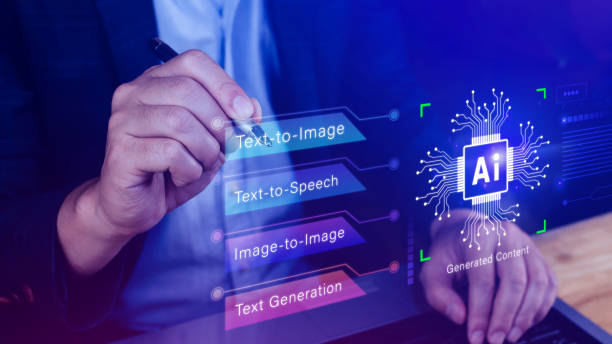
The development of artificial intelligence robots brings with it many ethical challenges that need special attention.
One of the most important of these challenges is the issue of accountability.
If an AI robot makes a decision that leads to harm or damage, who will be responsible? The designer, the manufacturer, or the user of the robot? Another challenge is the issue of privacy.
AI robots can collect a lot of information about people.
How can the misuse of this information be prevented? Also, the issue of discrimination is raised.
AI algorithms may be trained based on historical data that includes biases and discrimination.
How can these biases be prevented in the robots’ decision-making? In addition, the issue of robot independence is also raised.
How much should robots be allowed to make decisions independently? How can the misuse of this independence be prevented? Answering these questions requires discussion and exchange of views between experts, policymakers, and society.
The development of artificial intelligence robots must be done in compliance with ethical principles and with respect for human rights and values.
Otherwise, we may face unpleasant consequences.
Comparison Table of Artificial Intelligence Robots vs. Humans
| Feature | Artificial Intelligence Robot | Human |
|---|---|---|
| Processing Speed | Very Fast | Relatively Slow |
| Accuracy | Very High | Variable |
| Fatigue | None | Has |
| Emotions | None | Has |
| Creativity | Limited | High |
| Learning | Through Data | Through Experience and Education |
Does your current company website present a worthy image of your brand and attract new customers?
If not, turn this challenge into an opportunity with Rasaweb’s professional corporate website design services.
✅ Dramatically improves your brand’s credibility and image.
✅ Paves the way for attracting leads and new customers.
⚡ Contact Rasaweb now for free and expert consultation!
Impact of Artificial Intelligence Robots on the Labor Market

The impact of AI robots on the labor market is a complex and controversial issue.
On the one hand, AI robots can increase productivity and efficiency by automating repetitive and dangerous tasks and create new job opportunities in the fields of design, production, maintenance, and development of these robots.
On the other hand, AI robots can lead to job losses and increased economic inequalities by replacing human labor in some jobs.
Studies show that the impact of AI robots on the labor market depends on various factors, including the speed of technological progress, the amount of investment in education and skills training, and government policies in the field of labor force support.
To reduce the negative effects of automation on the labor market, it is necessary to take measures to educate and train the workforce, create new job opportunities, and support vulnerable people.
Also, special attention should be paid to the ethical and social issues related to automation.
AI robots can occupy many jobs but can also create many job opportunities.
Security of Artificial Intelligence Robots: Challenges and Solutions
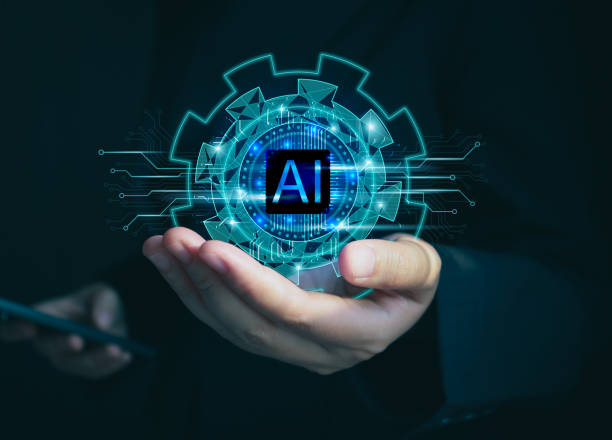
The security of AI robots is an important issue that needs special attention.
AI robots can be vulnerable to cyberattacks and be misused.
Hackers can take control of robots, steal their data, or use them to carry out other attacks.
For example, a hacker could take control of a surgical robot and harm the patient.
Or it can use a military robot to attack civilian targets.
To increase the security of AI robots, various methods should be used.
These methods include the use of strong encryption, two-factor authentication, and intrusion detection systems.
Also, robots should be updated regularly and their security vulnerabilities should be addressed.
In addition, necessary training should be provided to robot users so that they can use the robots safely.
The security of AI robots is an important task that requires cooperation between experts, policymakers, and society.
Table of Types of Security Vulnerabilities of Artificial Intelligence Robots
| Type of Vulnerability | Description | Solution |
|---|---|---|
| Injection Attacks | Hackers take control of the robot by injecting malicious code into it. | Use valid inputs and filter unauthorized inputs. |
| Denial-of-Service Attacks | Hackers make the robot unavailable by sending too much traffic to it. | Use intrusion detection systems and firewalls. |
| Data Theft | Hackers steal sensitive information by accessing the robot’s data. | Use strong encryption and two-factor authentication. |
| Identity Spoofing Attacks | Hackers take control of the robot by impersonating authorized users. | Use two-factor authentication and fraud detection systems. |
Frequently Asked Questions
| Row | Question | Answer |
|---|---|---|
| 1 | What is an artificial intelligence robot? | An artificial intelligence robot is a machine capable of understanding, reasoning, learning, and solving problems, and can perform complex tasks with relative autonomy. |
| 2 | What are the most important applications of artificial intelligence robots? | Main applications include industrial manufacturing, customer service (chatbots), medicine and surgery, self-driving transportation, space exploration, and military affairs. |
| 3 | What is the main difference between an artificial intelligence robot and a regular robot? | A regular robot only follows programmed instructions, while an AI robot can learn from data, make decisions, and adapt to new environments. |
| 4 | How do AI robots learn? | They learn through machine learning algorithms (such as deep learning, reinforcement learning) and processing huge amounts of data, identifying patterns, and improving their performance. |
| 5 | Can AI robots have emotions? | Currently, AI robots do not have real emotions in the human sense. They can mimic or recognize emotions, but they do not understand and experience them. |
| 6 | What are the current limitations of AI robots? | Limitations include the need for a lot of data, the inability to understand abstract concepts, the lack of real creativity, ethical issues, and the challenges of generalizability in new environments. |
| 7 | What is the role of artificial intelligence in the development of humanoid robots? | Artificial intelligence helps humanoid robots to walk, maintain balance, understand the environment, interact with humans, and perform complex tasks. |
| 8 | How is the future of AI robots predicted? | It is predicted that AI robots will become smarter, more autonomous and able to perform more complex tasks in everyday life and industry, and their interaction with humans will increase. |
| 9 | Can AI robots replace all human jobs? | It is unlikely that all human jobs will be replaced. Robots take on many repetitive and dangerous tasks, but jobs that require creativity, empathy, and moral judgment will remain. |
| 10 | What ethical and social challenges are raised with the expansion of AI robots? | Challenges include issues related to privacy, data security, ethical decision-making by robots, the impact on employment, and accountability in case of error. |
and other advertising agency services Rasa web in the field of advertising
Smart Marketing Automation: A professional solution for analyzing customer behavior with a focus on dedicated programming.
Smart Link Building: A novel service to enhance campaign management through marketing automation.
Smart Marketing Automation: A combination of creativity and technology to increase sales through marketing automation.
Intelligent Customer Journey Map: A quick and efficient solution to improve SEO ranking with a focus on Google Ads management.
Smart Direct Marketing: Designed for businesses looking to grow online through attractive user interface design.
and more than hundreds of other services in the field of Internet advertising, advertising consulting and organizational solutions
Internet Advertising | Advertising Strategy | Advertorials
Resources
Artificial Intelligence Robots in Practice
,Smart Robots in Today’s Life
,What is Artificial Intelligence and How Does It Work?
,What is a Humanoid Robot?
? Are you ready to transform your business in the digital world? Rasaweb Afarin Digital Marketing Agency paves the way for your online success by offering comprehensive services including professional website design, SEO, and social media management. Build the future of your business with us.
📍 Tehran, Mirdamad Street, Next to Central Bank, South Kazeroun Alley, Ramin Alley, No. 6
“`

